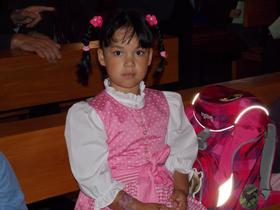Boarding School Diversity and Inclusion: How Schools Are Changing
In recent years, boarding schools have experienced a noticeable shift: the traditional model of elite, homogeneous residential education is giving way to more inclusive, diverse, and equitable approaches. This article explores how boarding school diversity and inclusion efforts are evolving in 2025, including how institutions define and implement practices of diversity, equity and inclusion (DEI), what concrete strategies are emerging, and how families and students can evaluate schools on these criteria.
What Diversity and Inclusion Mean in the Boarding School Context
Diversity in a boarding school typically refers to the representation of different races, ethnicities, nationalities, socio-economic backgrounds, gender identities, religious beliefs and abilities within the student and staff population. Inclusion means creating a school culture where every student feels seen, supported and valued, regardless of background.
For many boarding schools, embracing diversity and inclusion is no longer optional. As one college-preparatory boarding school writes, the “pillars of diversity, equity & inclusion might outrank all other perks of choosing a boarding school over traditional school.” Niche
In 2025, we are seeing more boarding schools adopt formal frameworks around DEI, shift admissions and hiring strategies, redesign curricula and expand student-life programs to build inclusive residential communities.
Why It Matters: Benefits of Diverse Boarding Environments
Diverse and inclusive boarding schools offer several clear benefits for students, families and educators:
Students gain daily exposure to peers with different life experiences, which fosters empathy, cultural competence and global awareness. whyboardingschool.com
Schools that recruit broadly and support students from underrepresented backgrounds can enhance academic outcomes, motivation and innovation.
For boarding schools, where students live, learn and grow together 24/7, the residential context amplifies the benefits of a diverse community—as well as the risks if inclusion is neglected.
In the boarding setting, diversity is not just about representation, but about belonging: students need to feel comfortable eating in the dining hall, participating in dorm culture, joining student groups, and seeing themselves reflected in faculty and leadership.
Key Areas of Change: What Boarding Schools Are Doing
Below is a summary table of the major domains in which boarding schools are evolving their diversity and inclusion work.
| Domain | Typical Challenges | Emerging Strategies |
|---|---|---|
| Admissions & Access | Under-representation of certain racial/ethnic groups, international students, low-income families | Need-blind or expanded financial aid; targeted outreach; profiling students from non-traditional feeder schools |
| Staff- & Leadership Diversity | Homogeneous faculty/residential life staff; leadership not reflective of student body | Active recruiting of diverse staff; professional development on equity; revision of hiring practices |
| Residential Life & Inclusion | Students from under-represented groups may feel isolated, unsupported or “othered” | Affinity groups, peer-mentoring, inclusive dorm programming, visible diversity in dorm leadership |
| Curriculum & Culture | Diversity seen as add-on rather than integrated; curriculum lacks global or minority perspectives | Embedding inclusive pedagogies, diverse texts, reflecting multiple perspectives in academic and co-curricular programs |
| Data & Accountability | Lack of metrics or transparency about diversity; limited follow-through on initiatives | Schools surveying students/families on belonging, tracking retention of under-represented students, reporting on hiring & admissions outcomes |
Real-World Examples from Boarding Schools in 2025
Example 1: Campus Culture & Inclusivity
At Hotchkiss School, the “Pluralism & Community” page notes that students of all races, backgrounds and orientations live, learn and grow together, and that the board and leadership have committed to open discourse and cultural engagement. This illustrates how boarding schools are elevating inclusive culture rather than treating diversity as only a metric.
Example 2: Structural Diversity Efforts
At Blue Ridge School, a boys’ boarding school, a DEI&J (Diversity, Equity, Inclusion and Justice) Task Force was formed in 2020 and the school is now reviewing governance, curriculum, recruitment, student life and support. blueridgeschool.com This shows how boarding schools are adopting structural reviews rather than superficial programs.
Example 3: Financial Access & Socio-economic Inclusion
While data is emerging, select boarding schools are expanding access via financial aid and rethinking tuition models to increase socio-economic diversity. For example, the movement in elite boarding schools toward income-based tuition or full-aid has grown in the past year.
Example 4: Affinity Groups and Student-Led Initiatives
At Pomfret School, boarding and day, the school has Unity Groups for students, faculty and staff meant to bring together individuals with common identity and to mentor, support and educate. pomfret.org This reflects how boarding schools are creating deliberate spaces for inclusion inside the residential life experience.
Trends & Developments for 2025
From tokenism to structural change: Boarding schools are moving beyond adding one off cultural festivals or “diversity days” towards embedding DEI into governance, faculty hiring, training, dorm life and strategic planning.
Greater transparency around data: More boarding schools are publishing data on student body diversity, admissions by geography or socio-economic status, and are surveying students on belonging.
Focus on socio-economic inclusion: Beyond race/ethnicity, many boarding schools are now emphasising socio-economic diversity, recognising that access must include students from different financial backgrounds.
Internationalisation & global citizenship: The residential environment naturally supports global diversity; boarding schools are accentuating international student recruitment, global curriculum, and multilingual/co-cultural living.
Residential life redesign: Dormitory life, board-to-student ratios, peer mentoring, programming and leadership in houses are being re-imagined to ensure inclusive community living.
What Prospective Families Should Ask
When evaluating boarding schools for their diversity and inclusion credentials, parents and students can ask the following:
Demographics: What percent of students and faculty come from historically under-represented racial/ethnic groups, international locations, low-income families?
Financial aid & access: What percentage of families receive substantial aid? How is socio-economic diversity addressed?
Residential life support: What affinity groups or student-led inclusion initiatives exist? How are dorms structured for belonging?
Curriculum & training: Are there dedicated faculty roles for DEI? Is inclusive pedagogy embedded in courses?
Outcomes & retention: Does the school track the experience of under-represented students (retention, sense of belonging, graduation outcomes)?
Leadership commitment: How is the board or leadership holding the school accountable for inclusion goals?
Daily culture: What does ‘inclusive community’ look like in everyday routines – dining, sports, clubs, dorm social life?
Looking Forward: The Next Frontier
In 2025 and beyond, boarding school diversity and inclusion efforts are likely to deepen in several key ways:
Intersectional diversity: More attention to overlapping identities (for example, students who are first generation, LGBTQ+, low-income and from a rural background) rather than single-axis diversity metrics.
Inclusive residential design: Dorms and facilities designed to facilitate belonging, flexible rooming by identity/interest, more peer-led inclusion programming.
Curriculum transformation: Greater integration of diverse perspectives in all courses (academic, arts, athletics) not just separate modules.
Student-community partnerships: Boarding schools increasingly partnering with local communities, service-learning and social justice initiatives to link inclusive boarding life with broader civic engagement.
Measurable accountability: Schools publishing annual DEI reports, benchmarking progress, and tying progress to leadership evaluation.
Conclusion
Diversity and inclusion in boarding schools are no longer only aspirational values. In 2025 the best boarding schools are transforming how they recruit, teach, house and support students to create inclusive residential communities that reflect our increasingly interconnected world. For parents, students and educators seeking the right boarding school fit, evaluating how a school lives its commitment to diversity, equity and inclusion can be as important as campus facilities or academic rankings. The boarding school of the future is about more than academic rigor—it is about preparing young people to flourish in a diverse, complex and global society.
By assessing boarding schools through the lens of diversity and inclusion—asking the right questions, reviewing medical policies, culture and residential life—families can align their choice with schools that are not only academically excellent but truly inclusive.














